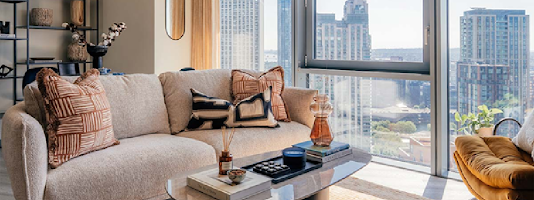In the modern environment, commercial facilities are essential. These include offices, stores, and co-working spaces. Buildings require longevity and expansion capabilities. Future-proofing designs from STYLARC is important for commercial spaces. They must adapt to evolving technology trends. Workstyle patterns and cultural developments are changing. Functionality must evolve with these trends.
Flexible Layouts for a Flexible World
Business establishments no longer rely on static cubicles with immovable walls. Modern organisations expect their facilities to adapt to their needs as business situations evolve. Open modular formats are the cornerstone of global design methodologies, as they utilise adjustable partitions and flexible furnishings, combined with multi-functional spaces.
Currently used as a meeting
space, organisations can transition the same area into a creative studio for
future operations. Such planning enables companies to reduce their renovation
expenses while maintaining preparedness for future uncertainties.
Smart Technology, Seamlessly Built In
The central force behind
designing buildings which can endure into the future comes from technological
advancements. Smart lighting, along with climate control, touchless entry, and
advanced security systems, has evolved from being premium items to becoming
standard equipment in buildings.
Luxury project planning and management services worldwide achieve user-friendly technology integration, impressing visitors while enhancing productivity and safety. These smart spaces maintain their contemporary relevance by being able to receive smooth updates, as they can accommodate new, emerging gadgets without requiring comprehensive redesigns.
Going Green the
Smart Way
Sustainability exists beyond being a fleeting trend since it represents a crucial duty. Global strategies focus on creating environmentally friendly designs that reduce energy consumption while supporting wellness goals. Lower utility bills, combined with sustainable materials and environmental comfort, mark future-proof structures that prioritise both efficiency and well-being for occupants. Green decisions inside workplaces result in reduced utility expenses as well as contented employees.
Blending Culture
into the Blueprint
As per STYLARC, design is not one-size-fits-all. The arrangement which functions in Tokyo would produce an inappropriate atmosphere within New York City. The implementation of global design strategies happens through a consideration of local cultural characteristics. Sustainable spaces emerge through the combination of international expertise with local cultural elements, selecting appropriate materials and suitable spatial arrangements that cater to community dynamics.
Wellbeing as the
New Focus
Commercial spaces that prepare for the future depend on human beings rather than technical infrastructure. Global Commercial Architectural Design Services now focuses its work on enhancing mental health and improving employee satisfaction levels. Spaces become stress-free through the implementation of quiet areas, meditation rooms, and exposure to nature, as well as ergonomic seating elements that support concentration and enhance productivity. The wellness-first design revolution promotes healthier, human-friendly workplaces that are emerging across the global marketplace.
Conclusion
The purpose of STYLARC involves being ready to adapt rather than making precise forecasts of what lies ahead. Companies can build adaptable commercial facilities by adopting intelligent, sustainable design concepts derived from global design principles, ensuring their future development. The primary objective of design today is to avoid future redesigns of tomorrow, regardless of plan size, from small stores to large office buildings.







